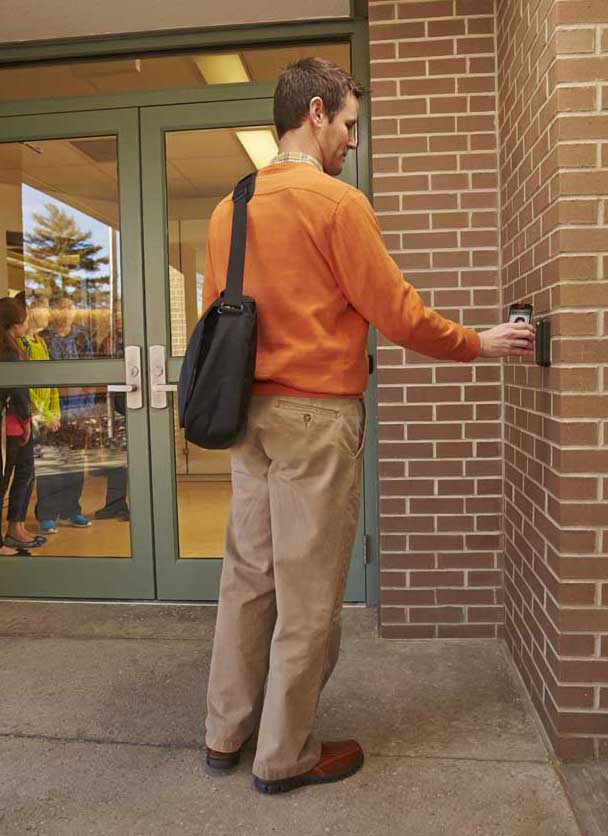
Many specifiers are uncertain of the difference between fail-safe and fail-secure security products, and how these functions apply to electric strikes, electromechanical locks, panic hardware, and electromagnetic locks. The two terms have both life safety and security implications.
While fail-safe products are unlocked when power is removed (i.e. power is applied to lock the door), fail-secure products are locked when power is removed (i.e. power is applied to unlock the door). Fail safe/fail secure refers to the status of the secure side (key side, outside) of the door. Most products provide free egress whether they are fail safe or fail secure.
Electric strikes
An electric strike replaces the regular strike for a lockset or panic hardware to electrically control access. For a single door, the electric strike mounts in the frame, and for a pair, it mounts in the inactive leaf or on a mullion. The lockset or panic hardware still functions as it normally would—free egress is available at all times, except in the case of double-cylinder institutional function locks.
The spring-loaded keeper on the electric strike controls the latchbolt of the lock or panic hardware. When access is allowed, the keeper is free and the latchbolt can be pulled through the keeper, so the door can be opened. When the strike is secure, the keeper secures the latchbolt and prevents the door from being opened. In most cases, a key can be used to retract the latchbolt from the secure side of the door to allow access if a manual override is needed. Since the lock or panic hardware functions independently of the electric strike, you can exit by turning the lever or pushing the touchpad of the panic hardware, regardless of whether the electric strike is fail safe or fail secure.
For electric strikes on fire-rated doors, fail-secure strikes must be used per the National Fire Protection Association (NFPA) 80, Standard for Fire Doors and Other Opening Protectives. Fail-secure strikes are typical for most applications, except when access is required upon fire alarm. There are very limited situations where access upon fire alarm is required. It is also important to know the use of an electric strike does not affect firefighter access. Their method for access on a door with a mechanical lockset (e.g. key or access-control credential in the key box or a tool) can still be used.